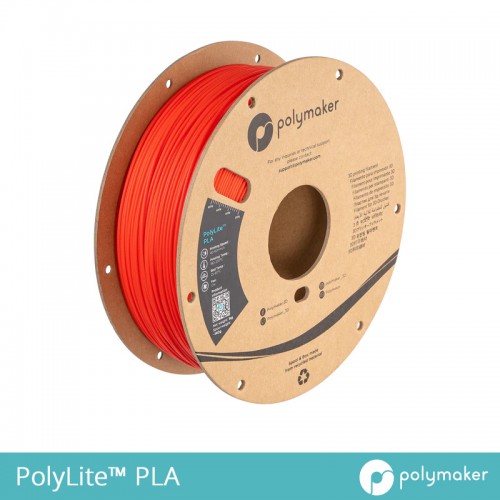



PolyLite™ PLA is based on a high molecular weight PLA from Natureworks, which makes it one of the most rigid PLA material on the market.
You can check the Young's modulus and bending strength data of PolyLite™ PLA in its TDS, which represent its rigidity, and compare it with other materials of our portfolio.
Polymaker Jam-Free Technology increases the heat resistance of the filament itself (not the printed part) to 140°C.
This prevent any jamming issue due to the hot end heat creep issue.
Heat creep is the process of heat spreading irregularly throughout your hot end, softening the filament before entering the melting chamber and jamming the filament by making it expand in the cold end..
The increase of the filament heat resistance from 60°C to 140°C ensures a Jam-Free experience.
(Note the printed part will have the same heat resistance as regular PLA: ~60°C)


Yes! PLA undergoes a two-step degradation process during composting. The first step is disintegration, where moisture and heat in the compost pile break down the polymer chains, resulting in smaller polymers and lactic acid. The second step is biodegradation, where microorganisms in compost and soil consume the smaller polymer fragments and lactic acid as nutrients. This process is temperature and humidity dependent and ultimately leads to the production of carbon dioxide, water, and humus, which is a valuable soil nutrient.
No customer reviews for the moment.